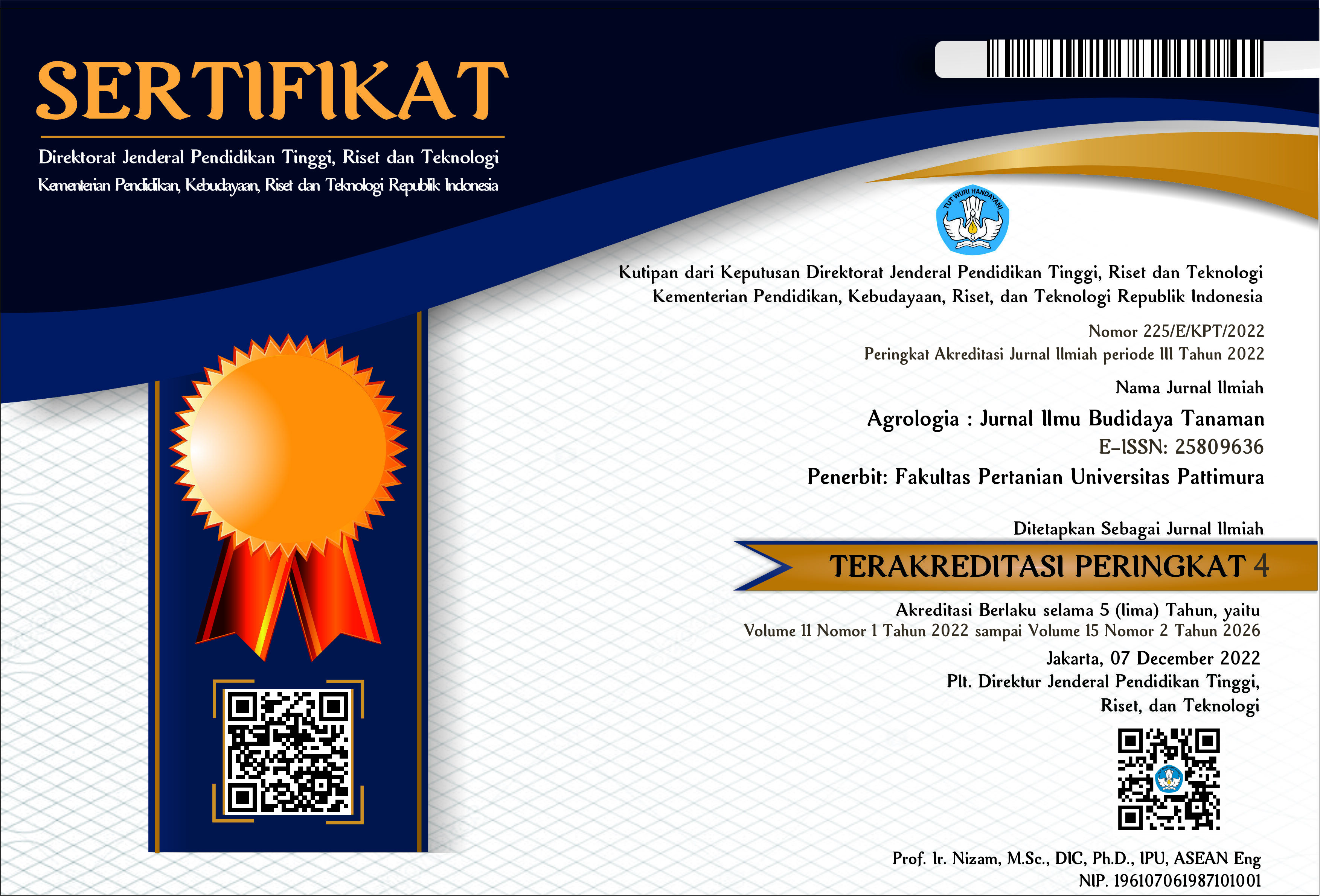Komponen Atsiri Varian Cengkih “Tuni” dan “Afo” Sebagai Varietas Cengkih Lokal Unggul Asal Kepulauan Maluku
Abstract
Tuni and Afo cloves from the Maluku Islands are two superior local clove varieties widely known in the global spice trade. Both clove varieties are generally traded in the form of dried flower buds, while trade in the form of essential oil is still limited. Previous research has reported that Tuni cloves have two variants, namely, Tuni-cluster I-a and Tuni-cluster I-b, as well as Afo cloves, which have been identified as having two variants, namely Afo-cluster II-a and Afo-cluster II-b. Until now, the content of all essential components of these two clove varieties has not been widely reported. This study aims to identify the content of critical components in the Tuni and Afo clove variants. The essential oil distillation of all samples used the steam-hydro distillation method, while the distillation oil was analyzed for its essential oil component content using Gas Chromatography-Mass Spectrometry (GC-MS) analysis in the form of Agilent Technologies 7890. The component data from the GC-MS analysis were displayed descriptively, while the heatmap profile of the essential oil component grouping was analyzed using R Stat 3.1.0 software. The analysis results obtained six critical oil components in Tuni-group I-a cloves, nine in Tuni-group I-b cloves, six in Afo-group II-a cloves, and six in Afo-group II-b cloves. Eugenol from the phenylpropanoid fraction was identified as the component with the highest concentration in all samples, followed by caryophyllene from the sesquiterpenoid fraction, and Phenol,2-mthoxy-4-(2-propenyl)-, acetate (eugenol acetate) from the phenylpropanoid fraction.
Downloads
Copyright (c) 2025 Abdul Karim Kilkoda, Asri Subkhan Mahulette, Muhammad Fajri Aditthia Lating

This work is licensed under a Creative Commons Attribution-NonCommercial-ShareAlike 4.0 International License.
License and Copyright Agreement
In submitting the manuscript to the journal, the authors certify that:
- They are authorized by their co-authors to enter into these arrangements.
- The work described has not been formally published before, except in the form of an abstract or as part of a published lecture, review, thesis, or overlay journal. Please also carefully read Agrologia : Jurnal Ilmu Budidaya Tanaman Posting Your Article Policy at https://ojs.unpatti.ac.id/index.php/agrologia/about
- That it is not under consideration for publication elsewhere,
- That its publication has been approved by all the author(s) and by the responsible authorities – tacitly or explicitly – of the institutes where the work has been carried out.
- They secure the right to reproduce any material that has already been published or copyrighted elsewhere.
- They agree to the following license and copyright agreement.
Copyright
Authors who publish with Agrologia : Jurnal Ilmu Budidaya Tanaman agree to the following terms:
- Authors retain copyright and grant the journal right of first publication with the work simultaneously licensed under a Creative Commons Attribution License (CC BY-NC-SA 4.0) that allows others to share the work with an acknowledgment of the work's authorship and initial publication in this journal.
- Authors are able to enter into separate, additional contractual arrangements for the non-exclusive distribution of the journal's published version of the work (e.g., post it to an institutional repository or publish it in a book), with an acknowledgment of its initial publication in this journal.
- Authors are permitted and encouraged to post their work online (e.g., in institutional repositories or on their website) prior to and during the submission process, as it can lead to productive exchanges, as well as earlier and greater citation of published work.




.png)
